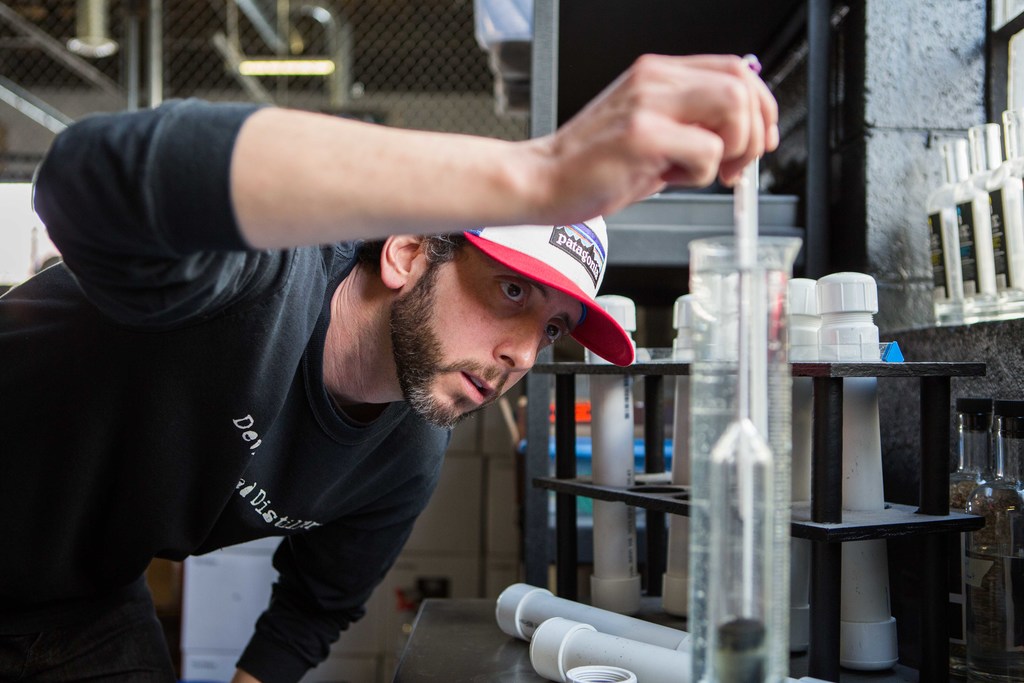Occasionally it can be difficult to put a finger on what exactly makes that drink at the bar better than the one you can make at home, or why your bread for the bake sale isn’t quite up to snuff. Dedication and hard work are part of the equation, but as someone once said, “it’s the tools that make the man.” Here, some of Denver and Boulder’s industry professionals share the tools that make their lives easier and their crafts better in the kitchen and behind the bar.
Jeff Cleary, founder of Grateful Bread Company
What is the most unexpected tool you can’t live without?
Our new Osttiroler Getreidemüehlen stone-grinding flour mill from Austria. As an artisan bakery, milling our own flour was something we were always interested in doing. But since we’ve incorporated our freshly milled organic whole grain flours into our breads, it has made a noticeable difference in flavor and become an indispensable part of our business.
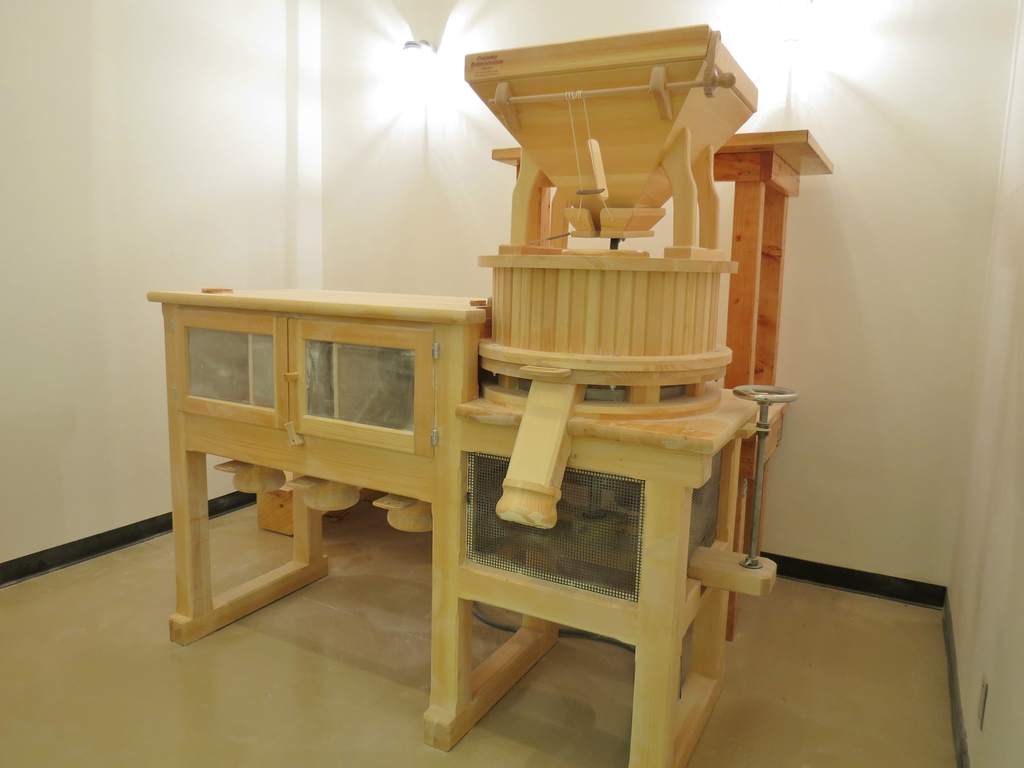
What makes it significant?
We purchased the East Tyrolean stone flour mill in order to further our commitment to all-natural handmade breads made with locally sourced ingredients, and we are currently in the process of sourcing grains from organic farmers. Freshly milled local wheat and grains add to the distinctiveness of our breads.
What separates it from other tools you use?
The mill looks like a beautiful piece of art, crafted from solid pine by the Green family for over 77 years from a centuries-old design.
How long have you been using this specific item?
The mill arrived about 7 months ago. Since then we have been experimenting and developing new flour blends as well as stone-milled grits which top chefs around Denver have been requesting.
How did you come across it?
We’ve known about this type of mill and admired the beautiful craftsmanship and design and how unique they are (the Green family are the only ones who make them). The finest quality flours come from slow horizontal stone mills, so we contacted them to have them make one for us. Each mill is hand made and it takes months to finish, then it has to be sent over by boat. Once in the States it was loaded onto a rail car and it finally arrived last fall here at the bakery.
Matt Vawter, chef de cuisine at Mercantile Dining & Provision
What is the most unexpected tool you can’t live without?
Vacuum sealer.
What makes it significant?
The amount of flavor you are able to enhance or impart on ingredients.
What separates it from other tools you use?
There is nothing even remotely close to it.
How long have you been using this specific item?
Since Mercantile Dining & Provision opened (never had one of these before then).
How did you come across it?
Seeing other chefs in cookbooks and kitchens use it.
Hosea Rosenberg, chef/owner and Nate Singer, head butcher at Blackbelly Butcher and Blackbelly Market
The team at Hosea Rosenberg’s new modern butcher shop, Blackbelly Butcher, has some very particular tools of the trade that are unique to them. Head Butcher Nate Singer has a handheld twine spool for tying salumi. “It’s a tool of the craft that many don’t possess, and it represents the heart and the art of salumi,” he said. Nate says he’s had his current one for two years, and says that he carved it himself after learning about it while tying cotechino with his friend Alberto.
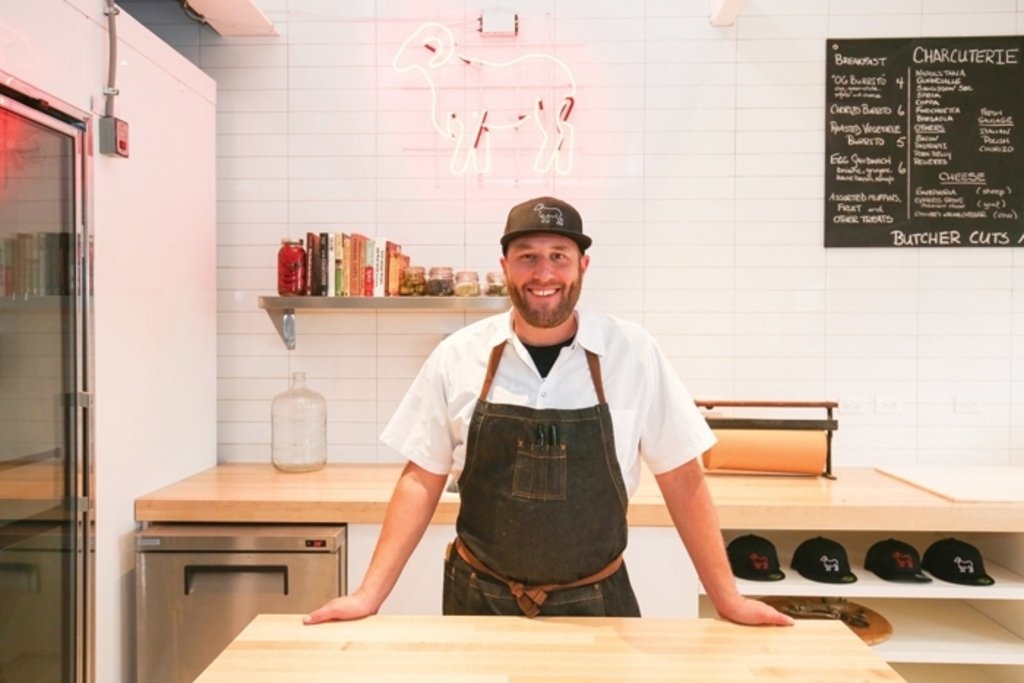
On the butcher shop’s other side at Blackbelly Market, chef/owner Hosea Rosenberg says he has a tiny mandoline that he picked up during a trip to Hong Kong. “I’m not even sure what it’s name is,” he said. “It’s smaller than a cell phone and isn’t adjustable—similar to a Japanese mandoline but much smaller (plastic frame with razor sharp blade built in).” Rosenberg says it slices paper-thin slices of vegetables and is great for traveling when he cooks at events. “It was a gift from an elderly Chinese woman chef who was delighted by how excited I was about the tool,” he said. “I haven’t been able to find one in the states yet, so it’s getting pretty dull. Hopefully before it dies I will find another one!”
Teddi Davis, proprietor of The Exchange Tavern
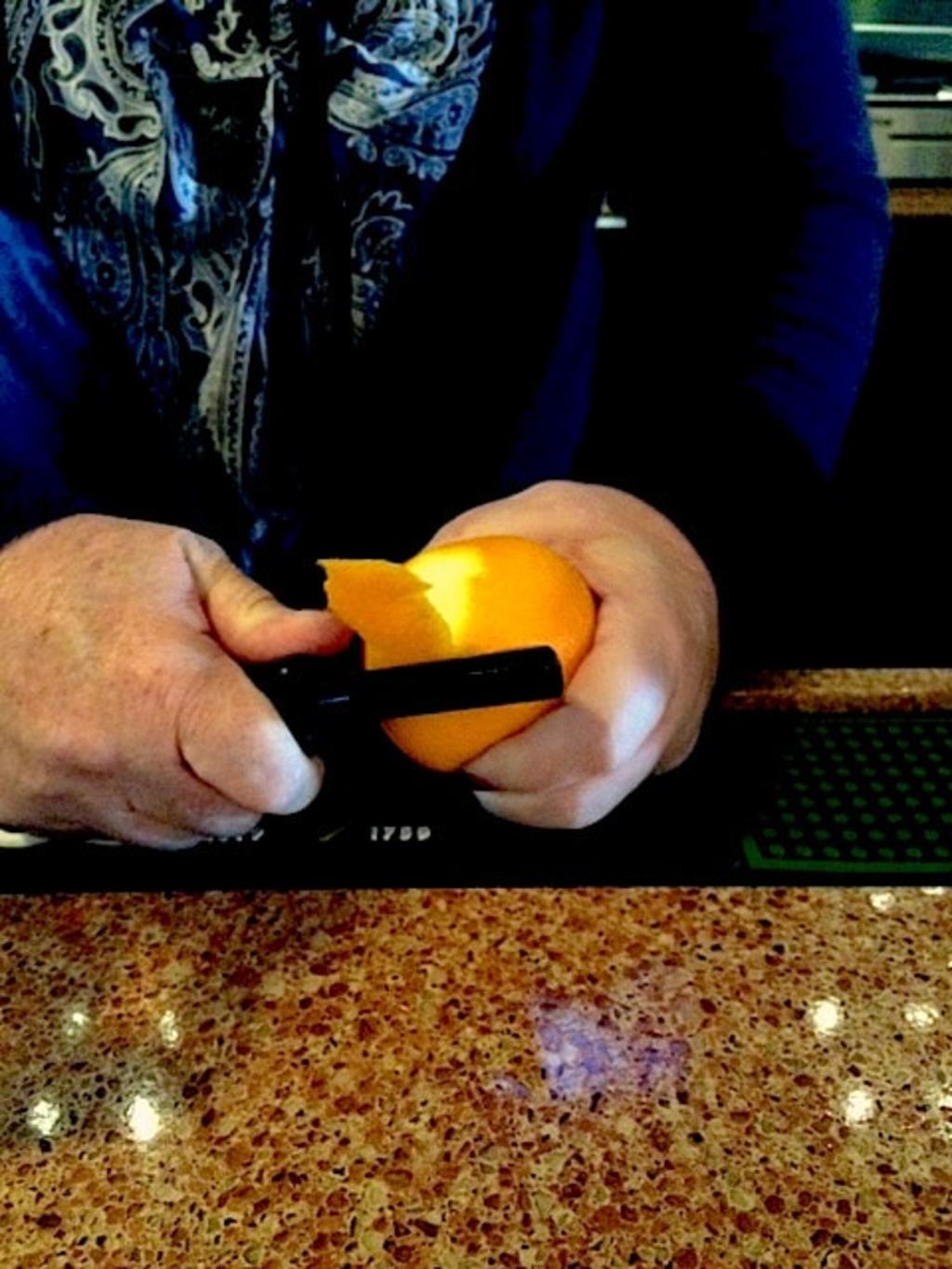
What is the most unexpected tool you can’t live without?
Behind the bar, the most unexpected tool is a potato peeler.
What makes it significant?
Because a thick swath of zest is needed to make craft cocktails hum, such as a healthy swath of Orange Zest makes for the best Negroni. All of our craft cocktails benefit from a larger zest than a traditional zest tool could provide.
How long have you been using this specific item and how did you come across it?
We tripped on this about a year ago, and while it’s low tech—it works! Inspiration came while trying to find a better zesting tool…it didn’t exist, so we improvised and we haven’t looked back!
Jamey Fader, culinary director of the Big Red F Restaurant Group
What is the most unexpected tool you can’t live without?
The support of my wife. While knives, spats, tongs and spoons make the food go out, the tool that truly gets shit done is my wife’s support. Without her, I would never be able to accomplish anything.
What makes it significant?
It’s always there when I need it most and it never tires, wears out, or becomes lackluster.
What separates it from other tools you use?
Support of this kind makes all the other tools work. In other words, like the BASF commercials that state “we don’t make the things you love, we make the things you love better.” That’s the separating line.
How long have you been using this specific item?
This item has been employed for 18 years.
How did you come across it?
I worked on trust, love and friendship…and it just sorta came with the package.
Ryan White, founder of Devil’s Head Distillery
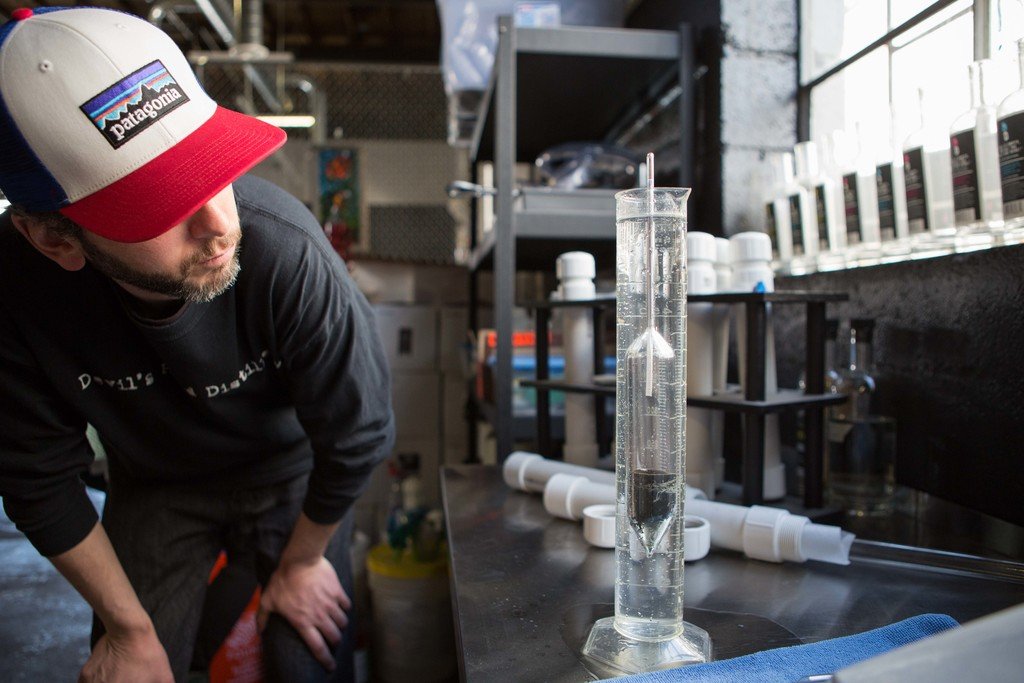
What is the most unexpected tool you can’t live without?
Proof hydrometers.
What makes it significant?
They’re used to measure the proof of distilled spirits—they’re old technology and have been around for a long time yet they’re still the preferred method for determining proof.
What separates it from other tools you use?
They’re necessary to ensure that our spirits are the proper proof prior to bottling.
How long have you been using this specific item?
Since day one!
How did you come across it?
They’re a must for any distiller.
AJ Snowhite, bartender at The Crimson Room
What is the most unexpected tool you can’t live without?
Lotion!
What makes it significant?
After a long night of making drinks and washing dishes your hands can get pretty beat up behind the bar, so to counteract the damage I like to be a bit proactive.
What separates it from other tools you use?
It might be the only tool I use behind the bar that has real health benefits
How long have you been using this specific item?
I’ve been keeping a small container of lotion behind the bar for years!
How did you come across it?
It was a great tip from a guy I used to work with for a long time. After a shift I was complaining to him about my beat up hands and he tossed me some lotion and told me to thank him later. Well, thanks Scott!
Patrick Williams, beverage director at Punch Bowl Social
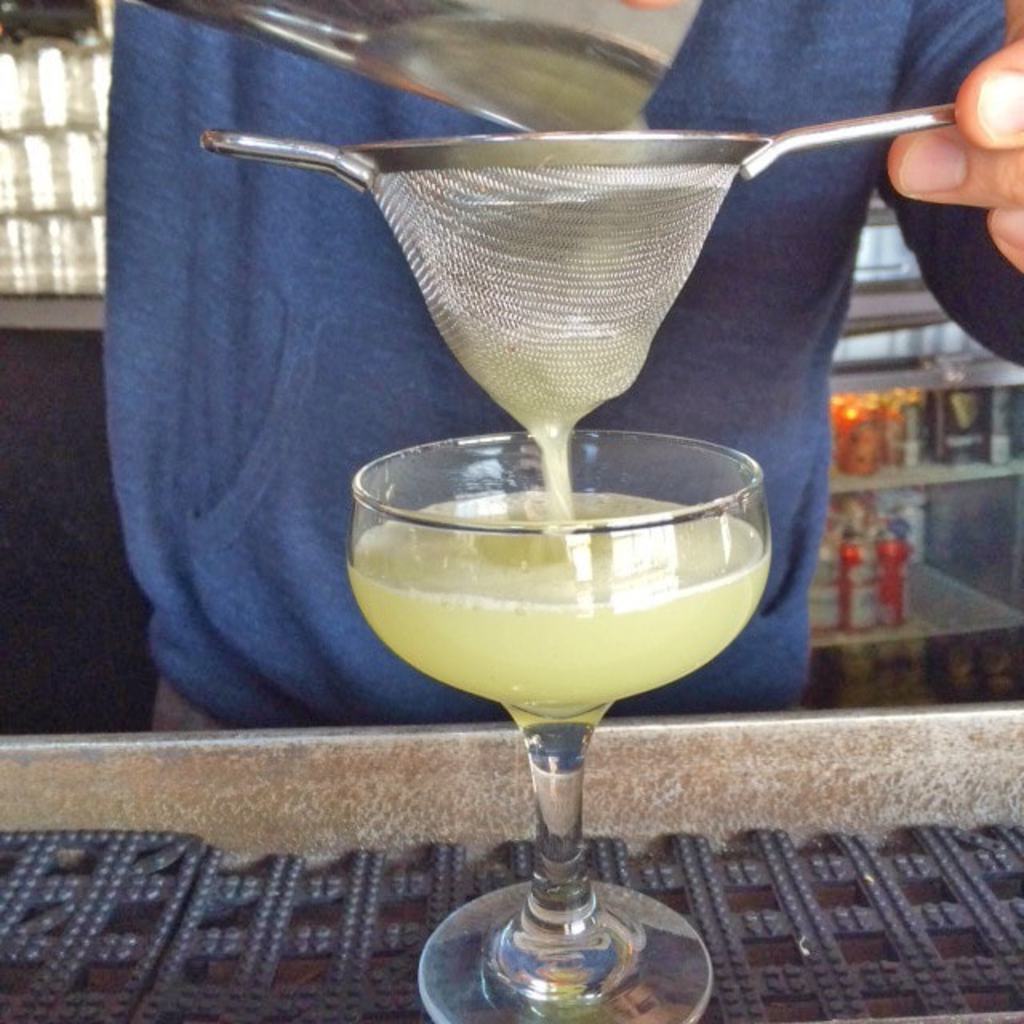
What is the most unexpected tool you can’t live without?
The mesh strainer is the most unexpected bar tool I cannot live without. The technique is referred to as “mesh straining” or “double straining” as the barkeep strains the drink once through the Hawthorne strainer and twice by pouring it through the mesh strainer in one motion.
What makes it significant?
It’s significant because it keeps muddled herbs, berries, and fruits as well as seeds, pith and ice chunks out of cocktails. It only lets liquid pass through which gives the drink a clean, smooth texture.
What separates it from other tools you use?
What separates it from the other tools is the finishing touch it puts on a cocktail. It provides the barkeep with an opportunity to use fresh ingredients, impart their flavor and limit their particles from floating in the drink and ending up stuck between your teeth.
How long have you been using this specific item?
I’ve been using this tool for about 7 years and I don’t see it ever making a departure from my tool bag. I’m a stickler for a cocktail’s texture and the mesh strainer.
How did you come across it?
I first came across this tool at bars that were focusing on proper bartending technique like Argyll, Root Down, and Steuben’s.
Dan Hildebrand, restaurant manager at Postino WineCafé

Dan Hildebrand is physically attached at all times to his “Handy Dandy” notebook. “I always have my Handy Dandy on me and use it to record anything that goes on that day,” he said. “It’s the only way for me to compile ideas throughout a shift and record them in our manager notes at the end of the night.”
Hildebrand admits he could never use something electronic for notes. Since Postino is located in the former Denver Bookbinding building, it’s even more fitting that he would resort to carrying around a book with him in the restaurant. “I can use it to take food and drink orders, take tentative reservations, write down all the guest names and contact info that I receive, record observations for things my servers point out as opportunities and any miscellaneous notes I make throughout my shifts,” he said. “It’s silly, but I decorate and make each handy dandy its own, and I can tell which notebook is from what date based on how I’ve decorated it.”





